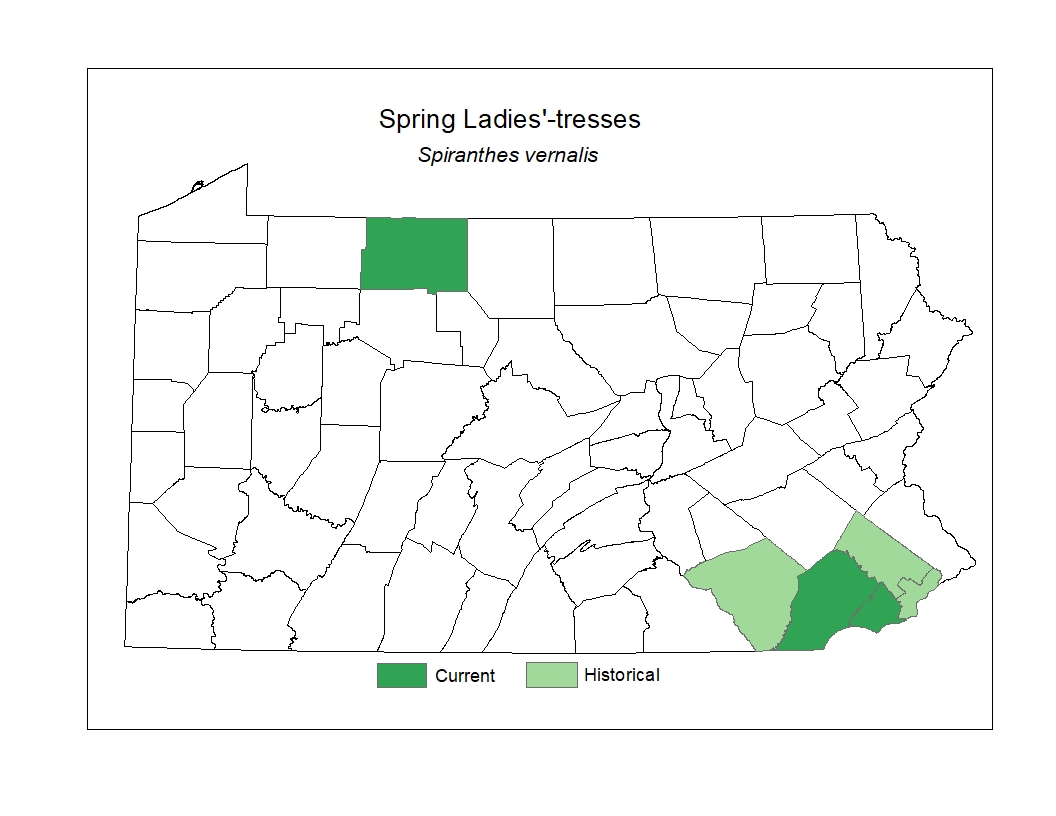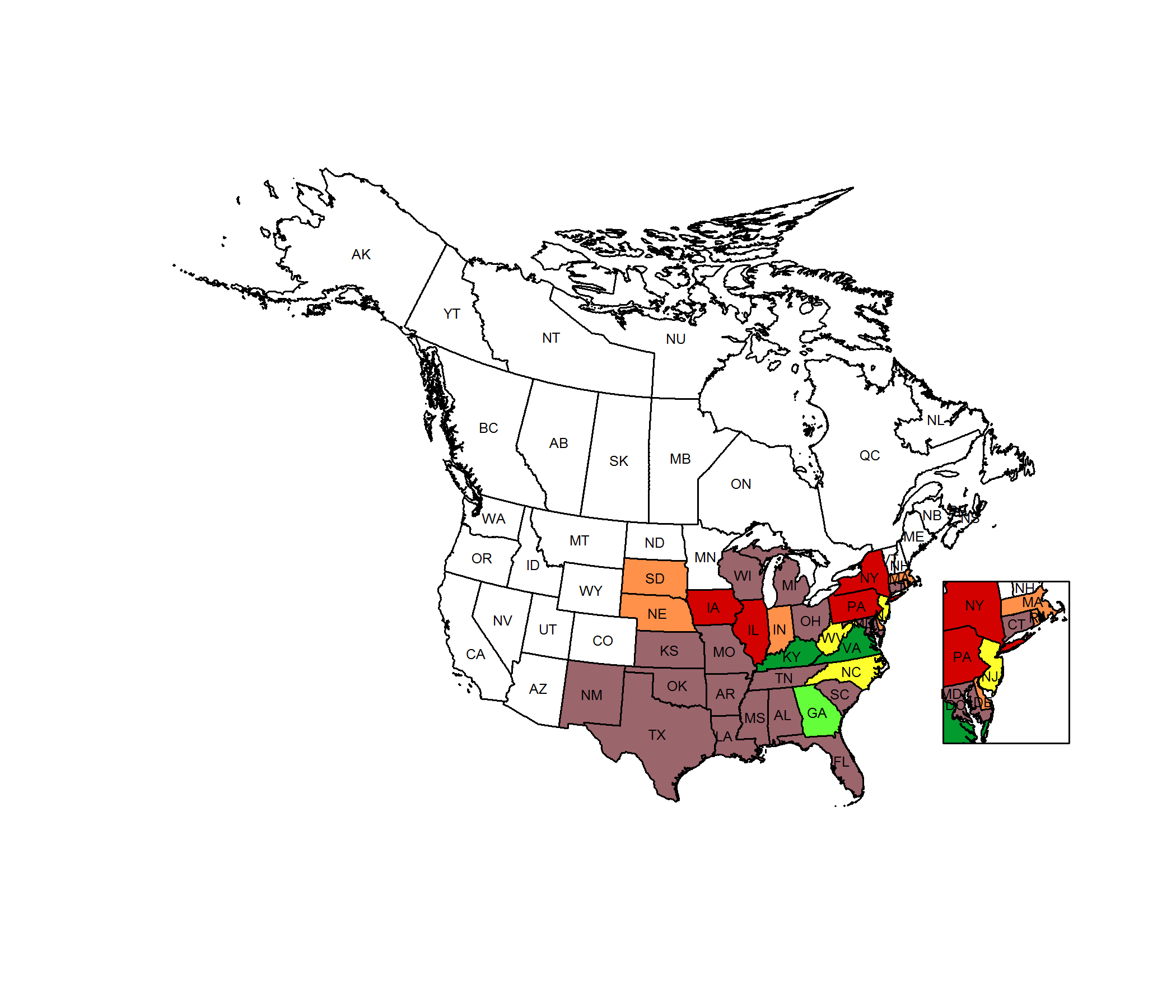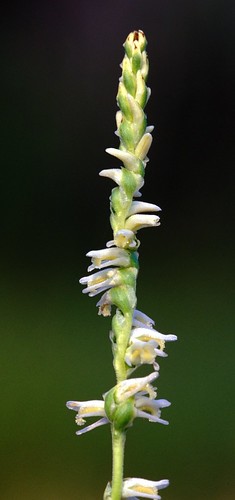 Species Factsheets
Species Factsheets
Spiranthes vernalis
Spring Ladies'-tresses
State Status: Pennsylvania Endangered (PE)
PBS Status: Pennsylvania Endangered (PE)
Federal Status:
Global Rank: G5
![]() rank interpretation
rank interpretation
State Rank: S1
Description
Spring Ladies'-tresses is an herbaceous perennial that may grow to 0.5 m in height. The aerial stem arises from several fingerlike roots. The leaves occur at the base and on the lower stem and have an alternate arrangement, and have a linear or narrowly lance-like shape, to 15 or more cm in length and 1 cm in width. They are usually present at flowering time, unlike some other species of Ladies’-tresses where the leaves are not evident at blooming time. The white flowers, appearing from May to August, are arranged in a loose spiral or coil around the stem. The surface of the stem along which the flowers are attached usually has a dense covering of very short 0.2- 0.3 mm pointed hairs, a key identification feature. The individual flower has its sepals and petals, which average about 7 mm in length, projecting forward together in a tube-like manner, with the lowermost petal (called a “lip” in orchids) marked with yellow in its center and having crisped margins around its exposed tip.
Rank Justification
Critically imperiled in the nation or state because of extreme rarity (often 5 or fewer occurrences) or because of some factor(s) such as very steep declines making it especially vulnerable to extirpation from the state.
Habitat
It grows in grasslands, meadows, clearings, and open woods.
Survey Dates
Flowers May - August
Distribution
Spring Ladies'-tresses ranges from southern New England to South Dakota and south into Florida and New Mexico. In Pennsylvania, it has been documented historically in the southeastern counties.

Management
The viability of populations of Spring LadiesÆ-tresses and its habitat may require active management, such as periodic mowing and invasive species removal, in order to maintain the proper ecological stage for the species. Excessive deer browse may be a threat at some locations. Additional field surveys are needed for this species, which can be difficult to detect because of its inconspicuous and unpredictable nature.
Conservation Status Map

NatureServe. 2017. NatureServe Explorer: An online encyclopedia of life [web application]. Version 7.1. NatureServe, Arlington, Virginia. Available https://explorer.natureserve.org.
- NatureServe. 2018. NatureServe Explorer: An online encyclopedia of life [web application]. Version 7.1. NatureServe, Arlington, Virginia. Available at https://www.natureserve.org/explorer
- Pennsylvania Natural Heritage Program. 2018.
- Rhoads, A.F. and W.M. Klein, Jr. 1993. The Vascular Flora of Pennsylvania. American Philosophical Society, Philadelphia, Pennsylvania. Rhoads, A.F. and T.A. Block.
- 2007. The Plants of Pennsylvania: An Illustrated Manual. 2nd edition. University of Pennsylvania Press, Philadelphia, Pennsylvania.







